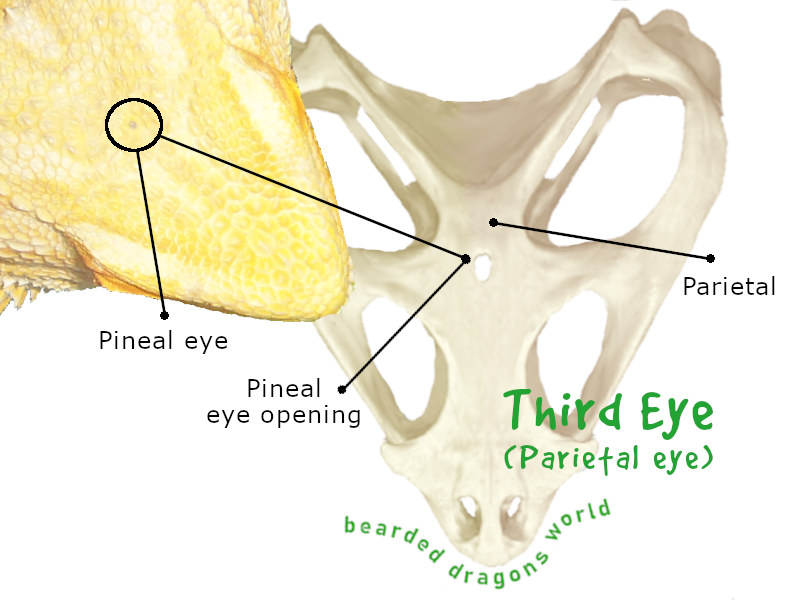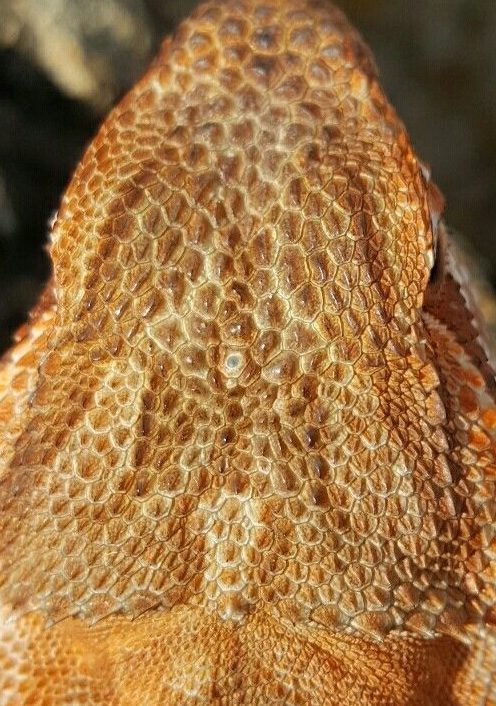It seems kind of quirky when you first hear about the third eye. Especially when you already have a bearded dragon as your pet and you first came to know that your bearded dragon has a third eye on it. No worries. I will clear things up for you.
Being a bearded dragon owner, I understand, how it feels like. A few questions may pop up in your mind. For instance, if it’s unnatural to have a third eye, how the third eye functions, and many more relevant things.
I understand caring for your bearded dragons is normal. Thus, if you want to find your answers regarded bearded dragons third eye, keep going through to discover interesting things and explore the fascinating world of bearded dragons. I bet many surprises are waiting for you.
Do All Bearded Dragons Have 3 Eyes?

The third eye is also known as the parietal eye. And it’s commonly found in tuatara. And, yes, all bearded dragons are born with a third eye.
It’s natural so you won’t have to be worried about it. The third eye of a bearded dragon doesn’t affect its behavior or health. If your beardie’s regular eyes are healthy, active, and responsive, and its behavior is normal, it’s a good indicator of its overall health.
The 3rd eye of these animals is not noticeable. They are tiny in size and doesn’t have any eyelid on them. As a result, it looks like a small dot. There are chances that you didn’t notice it before. In summary, the third eye doesn’t look that weird the way it sounds.
Can Bearded Dragons See Out of Their Third Eye?

Let me share some interesting facts about bearded dragons. Though the 3rd eye which is called the parietal eye has its specific functionality, it doesn’t work the same way the regular eyes do.
These pineal eyes don’t have a lens, a retina, and other components essential for vision. As a result, it can not process the images to the brain.
But with its other consisting features, the third eye can detect movements that are quite helpful to the creature in many ways. I have discussed it in the following segment in detail.
Which Other Animals Possess a Parietal Eye
The Bearded dragons are not the only animal with 3rd eye. There are more animals that possess a third eye like a bearded dragon.
Franz Leydig is the first person who discovered that lizards have a third eye between their regular eyes. Hereafter, scientists found that frogs, lampreys, particular fishes, and salamanders do also have pineal eyes.
It’s noteworthy that the functionality and significance of this third eye may vary among different species.
Remarkable Abilities of the Bearded Dragons Third Eye
Are you curious about the role of the third eye? Let’s check it out. The third eye of the bearded dragon doesn’t act like the other two eyes. But it works like a sensor for them.
For instance, the third eye can detect shadows, light levels, temperature levels, and shade variations. I hope you noticed how your bearded dragon is incredibly quick to sense things or predators above their head too.
The credit goes to their 3rd eye. They are likely to protect themselves with the eye on top of their head easily.
Apart from this, the dragon’s third eye also senses the temperature precisely and sends a signal to its brain to regulate its body temperature accordingly.
The third eye helps this little creature to ensure optimal comfort. It doesn’t refer to that you can leave your pet in extreme weather conditions. Taking care of it is a must. Try to put the temperature around your pet according to their comfort.
The third eye also assists in maintaining their biological condition well. It plays a vital role in regulating the reptile’s circadian rhythms such as sleep-wake cycles, metabolism, and hormone production.
The sensitivity of the third eye to light helps the little creature’s internal clock to synchronize with the external day-night cycle. All these things help a dragon survive in the wild.
Does the Bearded Dragon Third Eye Have an Eyelid?
As I have mentioned before, the dragon’s third eye doesn’t have an eyelid on it to protect it. But it has a translucent scale that protects the third eye from debris, UV radiation, and other external elements.
The scale is named ‘brille’. Though the brille doesn’t have the ability to blink or move. In summary, their anatomy is structured in a way that they can protect themselves well. While looking at my little pet, I find this fact quite amazing how mesmerizing nature can be!
Is It Okay to Touch a Bearded Dragon’s Third Eye?
I will recommend you not to touch the third eye recklessly because it can startle them or leave a negative impact on them. This third eye is an important and sensitive organ indeed.
Besides, this significant organ plays a vital role in your pet’s life. Disturbing them insensitively won’t bring any good to them.
If you want to handle them gently, you can learn about some reptile handling techniques. For example, you can’t put much pressure while holding them, avoid touching sensitive parts, etc.
Wrap-up
I hope now, you understand how things work for the bearded dragons about their third eye. Still, If you have concerns about your beloved pet’s health or behavior, I will suggest you consult with a qualified reptile veterinarian to get advice on the individual needs of your pet.
But if it is only about the third eye, you can leave things as they are. There are no health issues associated with the third eye unless it gets an infection. This is very natural for bearded dragons to have a parietal eye on top of their head.
Frequently Asked Questions
Where is the third eye located on a bearded dragon?
The third eye of a bearded dragon is located on the top of its head between its regular eyes. It’s a little rounded small organ that is generally unnoticeable. This unique feature sets bearded dragons apart from many other reptiles. Undoubtedly, it plays a role in their sensory perception and behavior.
Can the third eye in bearded dragons see color?
The bearded dragons can’t see the colors through their parietal eyes as it does not possess some significant features. Thankfully, its other two eyes are featured with the quality of seeing colors normally. Though the reptiles’ third eye does not see color, they use their third eye to detect changes in light and darkness.
How can I ensure the health and well-being of my beardie’s third eye?
Taking care of your bearded dragons is normal. But I must say that the third eye of it does require minimal care. If you still want to take care of your dragon’s third eye, avoid using extreme lights. Keep your bearded dragon in a clean place. Besides, allow your bearded dragons to have a proper diet, and observe their regular behavior. And, if you notice an abnormality in their sensory perception and behavior, seek veterinary care for expert guidance.



